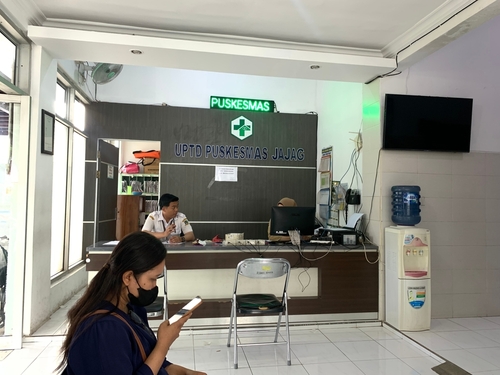January 11, 2021

COVID-19
Immunological memory to SARS-CoV-2 assessed for up to 8 months after infection. Researchers analyzed multiple compartments of circulating immune memory (antibodies, memory B cells, CD8+ T cells, and CD4+ T cells) to SARS-CoV-2 in 254 samples from 188 COVID-19 cases reporting a full range of disease severities. The period of measurements began soon after an individual was confirmed to have the disease and concluded up to 8 months later. By understanding the immune memory, researchers could gain insights into the risk and disease severity of re-infection. The study showed that the different components of the SARS-CoV-2 immune response were characterized by distinct kinetics. Approximately 95% of the study population had measurable amounts of immune agents in at least three components 5 to 8 months post-symptom-onset, implying that immunity against secondary COVID-19 disease is a possibility in most individuals. However, given the observed heterogeneity in the magnitude of adaptive immune responses to SARS-CoV-2, infected individuals with low immune memory could be susceptible to re-infection. The authors concluded that additional studies are needed to gain insight into the mechanisms that lead to the heterogeneity of immune responses in COVID-19 patients. [Science]
British Society for Immunology statement on COVID-19 vaccine dosing schedules. In a position statement, the British Society for Immunology supported the change in COVID-19 dosing schedule recommended by the Joint Committee on Vaccination and Immunisation for the Oxford/AstraZeneca and for the Pfizer/BioNTech vaccines. Given the high levels of SARS-CoV-2 circulating in the UK and the emergence of the more transmissible variants, experts suggest that it would be beneficial to delay the second dose of the vaccine from 3-4 weeks to 12 weeks. This recommendation, supported by clinical trial evidence and expert opinion, aims to increase coverage for the first dose, thereby protecting more people from symptomatic disease in the short-term. Although the original dosing schedules tested in the trials are preferred, the British Society for Immunology recognizes that a pragmatic approach in the short-term is needed to mitigate currently high transmission rates. [British Society for Immunology].
Seroprevalence of anti–SARS-CoV-2 IgG antibodies in Kenyan blood donors. To date, Kenya, along with much of the rest of Africa, has far fewer confirmed COVID-19 cases and deaths than most other nations. To better understand why this may be, Kenyan public health officials along with researchers from Oxford, and the London School of Hygiene and Tropical Medicine measured the seroprevalence of SARS-CoV-2 antibodies in a sample of 3098 blood transfusion donors. What they found was a 5.6% crude, and 4.3% adjusted seroprevalence, which was comparable to seroprevalences surveys taken in China, Spain, Switzerland, and the US. While the researchers recognize that the official tally of confirmed cases and deaths may be an undercount, it still does not explain the dramatic reduction in deaths, or why hospitals were not as overwhelmed with respiratory illnesses as other countries. The 4.3% prevalence in blood transfusion donors is in sharp contrast with the reported COVID-19 cases and deaths and supports the impression that disease may be attenuated in Africa. [Science]
The effect of interventions on COVID-19. In a response to Nature, Soltesz et al. critique the model by Flaxman et al. attempting to quantify the effect of individual non-pharmaceutical interventions (NPIs) in 11 European countries. The analysis by Flaxman et al. suggested that complete lockdown was the only NPI with a sizeable effect on the reproductive number compared to social distancing, self-isolation, school closures, and banning public events. Researchers argue that Flaxman’s final model is over-flexible and very sensitive to small and reasonable changes in input data. They demonstrate the sensitivity of results with previous versions of the model and the example of Sweden, which never had a national lockdown. The effects of individual NPIs cannot be reliably quantified because of their close temporal proximity. In conclusion, Soltesz et al. warn that the model by Flaxman et al. should be treated with caution with regards to policymaking. [Nature]
Underdetection of COVID-19 cases in France threatens epidemic control. After the initial wave of COVID-19 in Europe in spring 2020, test-trace-isolate strategies were used to contain the spread of the virus. In a recent paper in Nature, researchers estimated the rate of detection of COVID-19 symptomatic cases in France after lockdown using virological and participatory syndromic surveillance data, as well as mathematical transmission models calibrated to regional hospitalizations. They found that around 90,000 incident symptomatic infections were missed by the surveillance system from May 11 to June 28, 2020, although the test positivity rate, which is an indicator of spread in a community, remained low. The median detection rate of diseases increased from 7% to 38% over the study period, as capabilities improved. According to participatory surveillance data, only 31% of individuals with possible COVID-19-like symptoms consulted a doctor during the 7 weeks. This suggests that large numbers of symptomatic COVID-19 cases did not seek medical advice despite recommendations, as confirmed by serological studies. The researchers conclude that more aggressive, targeted, and efficient testing is required for testing strategies to be effective. [Nature]
Drug resistance and global health
Economic and behavioral influencers of vaccination and antimicrobial use. The growing global trend in vaccine hesitancy carries important implications in light of the COVID-19 pandemic and the overuse and misuse of antibiotics. In this context, it is unclear why antibiotic use is perceived as safe, while vaccines are perceived as hazardous. Researchers analyzing personal, societal, and economic factors affecting vaccine hesitancy and antimicrobial overuse, observed that misperceptions about risk are in part responsible for the differential uptake of vaccines and antimicrobials. For instance, some individuals may underestimate the risk of disease because they expect a certain level of protection from herd immunity and instead may overestimate the risk of adverse events from vaccination. This may be particularly relevant in the context of COVID-19, and the importance of rigorous vaccine testing to maintain public trust. Furthermore, social norms of non-vaccination may also contribute toward vaccine hesitancy and refusal; specific racial and ethnic communities may have unique relationships to vaccines for a variety of historical reasons. The authors conclude that vaccine hesitancy and antimicrobial overuse warrants consideration from policymakers and that coordinated interventions and the messages they convey should be informed by social norms theory. [Frontiers Public Health]
Filling the gaps in the global prevalence map of clinical antimicrobial resistance. To fill in the gaps in AMR prevalence in resource-limited countries lacking AMR surveillance, researchers used the relationship between AMR prevalence and socioeconomic characteristics in a beta-binomial principal component regression to estimate AMR prevalence for nine pathogens resistant to 19 classes of antibiotics; prevalence data from ResistanceMap were combined with socioeconomic profiles constructed from 5,595 World Bank indicators. The model provided robust estimates of AMR prevalence for most priority pathogens (cross-validated q2 > 0.78 for six out of nine pathogens), revealing areas in need of surveillance effort prioritization. For carbapenem-resistant Acinetobacter baumannii and third-generation cephalosporin-resistant Escherichia coli, specific countries of interest were located in the Middle East, sub-Saharan Africa, and the Pacific Islands. [PNAS]
Assessing Upstream Determinants of Antibiotic Use in Small-Scale Food Animal Production through a Simulated Client Method. Although small-scale food animal production has contributed to economic mobility and food security, particularly for individuals in low- and middle-income countries, inappropriate use of veterinary antibiotics in this sector may contribute to antibiotic resistance in animals and humans. Researchers used Simulated Client Method (SCM) visits to veterinary supply stores and surveys with households that owned food animals in Ecuador to evaluate the determinants of antibiotic use. Among surveyed households with small-scale food animals, 21% reported giving antibiotics to their food animals within the last six months. In SCM visits, 66% of the sales agents recommended growth-promoting antibiotics and 48% of the sales agents recommended an antibiotic belonging to the inappropriate class for disease treatment. However, only 3% of the sales agents offered to sell colistin, which was banned in Ecuador in January 2020, suggesting that government regulations can be effective in curbing inappropriate antibiotic use in animals. [Antibiotics]
Optimal design of paired built environment interventions for control of MDROs in acute care and community hospitals. The emerging threat of multidrug-resistant organisms (MDROs) poses an issue for many healthcare facilities and causes an additional burden to hospitals under stress. As MDROs, like methicillin-resistant Staphylococcus aureus (MRSA), carbapenem-resistant Enterobacteriaceae (CRE), and vancomycin-resistant Enterococci (VRE), are becoming more common in hospitals, hospital design must take into consideration the impacts of these infections. Researchers from the US and South Africa utilized computational models and data from US Army hospitals to investigate how hospitals can optimize their design to reduce the spread of MDROs, and revealed that enormous costs associated with infections could be avoided with optimal investment in various infection control interventions. For large hospitals, up to 69% of MDRO infections could be mitigated with direct cost-savings of $1.5 million. The authors concluded that engineering optimization could provide decision-makers a framework for designing hospitals to prevent MDROs within a budgetary constraint, a tool that could prove to be beneficial in resource-limited countries. [Health Environments Research & Design Journal].
Do childhood infections affect labour market outcomes in adulthood and, if so, how? A growing body of research explores the effects of childhood health on socioeconomic outcomes. Researchers explored associations between infection-related hospitalizations (IRHs) during childhood (ages 0-18) and labor market outcomes later in life (ages 24-30 in 2001). Data on 1706 participants came from an ongoing epidemiological study in Finland. Researchers used the Sobel mediation analysis to test the association, exploring years of education and adult health as mediators and controlling for gender, family income during childhood, and parental education level during childhood. They found that a higher number of IRHs during childhood was associated with lower earnings, fewer years of employment, and a higher probability of receiving social income transfers during adulthood. While education played a considerable role, adult health was statistically insignificant as a mediator. [Economics & Human Biology]
Photo: Shutterstock











